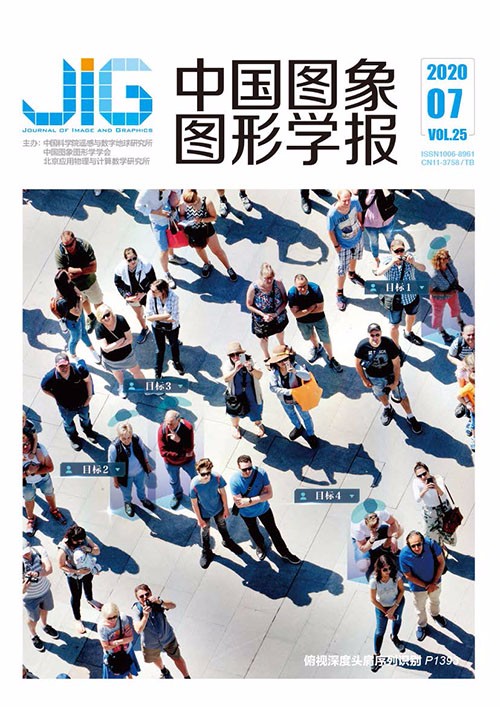
智能制造中的计算机视觉应用瓶颈问题
雷林建1,2, 孙胜利1, 向玉开1,3,2, 张悦1,3, 刘会凯1,3(1.中国科学院上海技术物理研究所, 上海 200083;2.上海科技大学信息科学与技术学院, 上海 201210;3.中国科学院大学, 北京 100049) 摘 要
计算机视觉在智能制造工业检测中发挥着检测识别和定位分析的重要作用,为提高工业检测的检测速率和准确率以及智能自动化程度做出了巨大的贡献。然而计算机视觉在应用过程中一直存在技术应用难点,其中3大瓶颈问题是:计算机视觉应用易受光照影响、样本数据难以支持深度学习、先验知识难以加入演化算法。这些瓶颈问题使得计算机视觉在智能制造中的应用无法发挥最佳效能。因此,需要系统地加以分析和解决。本文总结了智能制造和计算机视觉的概念及其重要性,分析了计算机视觉在智能制造工业检测领域的发展现状和需求。针对计算机视觉应用存在的3大瓶颈问题总结分析了问题现状和已有解决方法。经过深入分析发现:针对受光照影响大的问题,可以通过算法和图像采集两个环节解决;针对样本数据难以支持深度学习的问题,可以通过小样本数据处理算法和样本数量分布平衡方法解决;针对先验知识难以加入演化算法的问题,可以通过机器学习和强化学习解决。上述解决方案中的方法不尽相同,各有优劣,需要结合智能制造中具体应用研究和改进。
关键词
Bottleneck issues of computer vision in intelligent manufacturing
Lei Linjian1,2, Sun Shengli1, Xiang Yukai1,3,2, Zhang Yue1,3, Liu Huikai1,3(1.Shanghai Institute of Technical Physics, Chinese Academy of Sciences, Shanghai 200083, China;2.School of Information Science and Technology, ShanghaiTech University, Shanghai 201210, China;3.University of Chinese Academy of Sciences, Beijing 100049, China) Abstract
Computer vision plays an important role in detection, recognition, and location analysis in intelligent manufacturing, especially in industry inspection. It has made great contributions to improve the inspection rate, the accuracy of industrial inspection, and the degree of intelligent automation. However, the popularity of computer vision technology is insufficient in intelligent manufacturing because of its several technical application difficulties. Dealing with these problems has become a top priority in the popularization of computer vision in intelligent manufacturing. The three key application bottlenecks are the illumination impacts, sample data that cannot support deep learning, and prior knowledge that cannot support evolutionary algorithms. These bottlenecks make computer vision in intelligent manufacturing inefficient and cannot be applied in several fields. Therefore, these bottlenecks need to be systematically analyzed and resolved. We first summarized the concepts of intelligent manufacturing and computer vision. Then, the development of computer vision in intelligent manufacturing and the demand of intelligent manufacturing for computer vision technology were presented. We elaborated that computer vision could increase the inspection accuracy and rate and provide many details that cannot be found by human beings by comparing it with traditional methods. On the basis of the development status and needs of computer vision in intelligent manufacturing inspection, we proposed three critical bottlenecks in computer vision applications, namely, 1) In the actual industrial situation, uneven illumination is easily obtained because the environment is complex, and the light source is simple. Thus, The problem where the image quality is immensely impacted by illumination should be explored. 2) Obtaining uniform sample data of more than 10 000 levels in the actual industry is difficult. The problem where the sample data cannot support computer vision detection task based on deep learning should be given great importance. 3) Computer judgment cannot achieve the accuracy of professional judgment. Rational addition of human prior knowledge into evolutionary algorithms to reduce the difficulty of deep learning algorithms should be deeply analyzed. Then, we focused on summarizing and analyzing the status, source, and existing solutions of the three problems in sequence. Several widely-accepted or effective methods were analyzed and compared in the sections. We conducted make a feasibility analysis through the qualitative analysis of data and principles to prove that they can be used in intelligent manufacturing. A thorough analysis indicates that: illumination can be solved through some algorithms used in image acquisition; the sample data that cannot support deep learning can be solved using a small sample data processing algorithm and a sample quantity distribution balance method; for prior knowledge that cannot support evolutionary algorithms can be solved through machine learning and reinforcement learning. The methods in the above solutions are numerous and different. Each of them has its own advantages and disadvantages and needs to be researched and improved in specific applications in intelligent manufacturing. This overview summarizes the bottlenecks of computer vision applications in intelligent manufacturing, analyzes the corresponding solutions, and provides specific example methods. The application feasibility of these methods in intelligent manufacturing is also analyzed. The methods described in this paper can be applied to intelligent manufacturing. We propose new ideas for solving bottleneck problems. This paper provides certain reference values for readers and scholars using computer vision in intelligent manufacturing.
Keywords
intelligent manufacturing computer vision illumination uniformity control sample data augmentation heuristic knowledge applying
|



 中国图象图形学报 │ 京ICP备05080539号-4 │ 本系统由
中国图象图形学报 │ 京ICP备05080539号-4 │ 本系统由